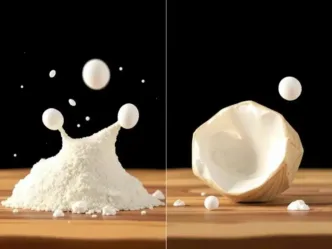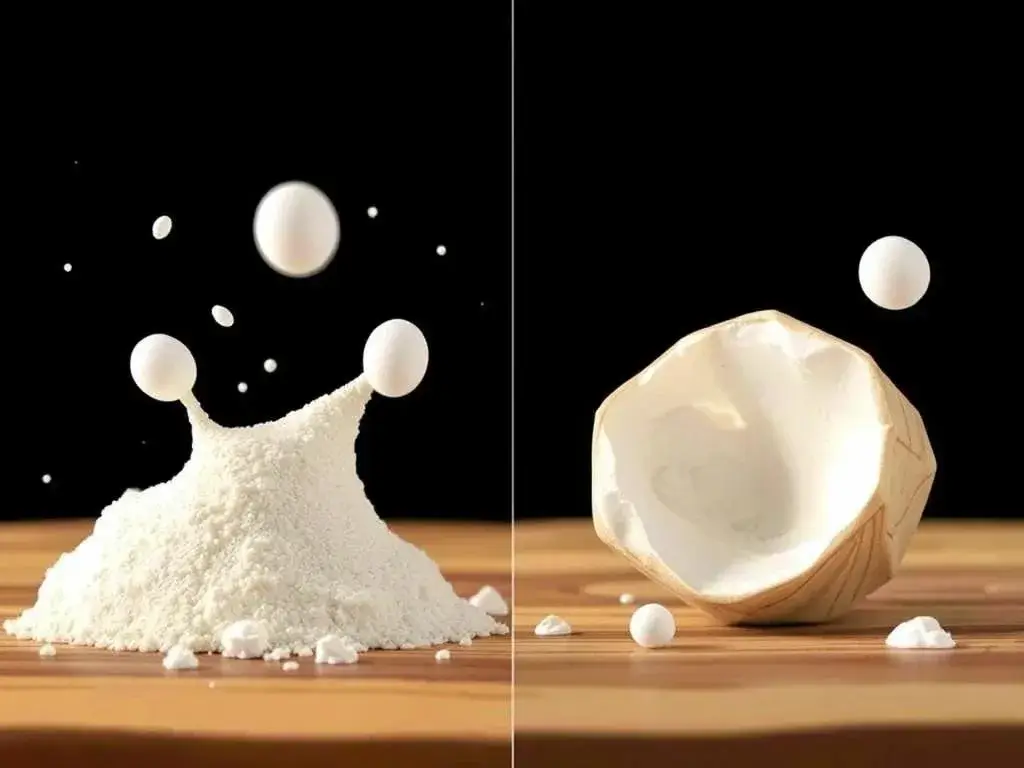What structural differences can be found between starch and cellulose? Discover how their unique molecular architectures influence their roles in energy storage and structural integrity, along with their digestibility, applications, and implications for both nature and industry.
Structural Differences Between Starch and Cellulose: Unveiling the Architectural Nuances of Plant Polysaccharides 🔬
In the intricate world of plant biochemistry, starch and cellulose stand as quintessential polysaccharides, both constructed from glucose monomers yet diverging dramatically in their molecular blueprints, also structural differences can be found. These structural variances not only dictate their physical properties but also underpin their biological roles, digestibility, and industrial applications. As foundational components of plant life, they exemplify nature’s ingenuity in tailoring similar building blocks for disparate purposes—one for energy storage, the other for structural fortitude.
This exploration delves into every facet, from monomeric composition and linkage configurations to branching patterns, supramolecular assemblies, functional implications, evolutionary contexts, and practical utilizations, offering a comprehensive perspective on how these molecules shape ecosystems and human endeavors.
Starch vs Cellulose meaning and definition
Starch
A storage polysaccharide built from α-glucose units linked mainly by α-1,4 (and some α-1,6) glycosidic bonds; it forms helical or branched chains that are water-soluble/digestible and serve as the primary energy reserve in green plants.
Cellulose
A structural polysaccharide composed of β-glucose units joined exclusively by β-1,4 glycosidic bonds; its linear, unbranched chains hydrogen-bond into tough microfibrils that form the load-bearing framework of plant cell walls and are indigestible by humans.
Explore the structural differences between starch and cellulose, two essential plant polysaccharides.
Monomeric Foundations: The Common Building Block with Subtle Twists 🧱
At their core, both starch and cellulose derive from D-glucose units, a six-carbon sugar that serves as nature’s versatile scaffold. However, the stereochemistry at the anomeric carbon (C1) introduces the first divergence: starch employs α-D-glucose, where the hydroxyl group orients below the ring plane in the Haworth projection, fostering a coiled, accessible form.
Cellulose, in contrast, utilizes β-D-glucose, with the hydroxyl projecting above, promoting a rigid, extended linearity. This seemingly minor anomeric flip profoundly influences chain flexibility and intermolecular interactions, setting the stage for their divergent architectures.
Linkage Configurations: The Bonds That Define Rigidity vs. Flexibility 🔗
The glycosidic bonds cement these distinctions. Starch features α-1,4 linkages as its primary chain connectors, allowing helical coiling that facilitates enzymatic breakdown, supplemented by α-1,6 branches for compactness. These bonds enable a dynamic, soluble structure ideal for rapid mobilization.
Cellulose relies exclusively on β-1,4 glycosidic linkages, which enforce a straight, unyielding chain due to the equatorial orientation of substituents, resisting hydrolysis and promoting crystalline packing. Absent branching, cellulose forms unbroken linear polymers, often exceeding 10,000 glucose units, contrasting starch’s more modular assembly of 300-3,000 residues per chain.
Branching Patterns: Solubility and Accessibility Contrasts 🌿
Starch’s dual nature—amylose (linear, 15-20% of total) and amylopectin (branched, 80-85%)—imbues it with solubility and enzymatic vulnerability. Amylopectin’s α-1,6 branches every 24-30 residues create a clustered, bushy topology, enhancing water dispersion and storage density in amyloplasts.
Cellulose eschews branching entirely, yielding uniform, fibrillar chains that aggregate into microfibrils via hydrogen bonding. This homogeneity confers insolubility and tensile strength, with chains aligning in antiparallel sheets, evoking a molecular scaffold akin to reinforced concrete.
Supramolecular Assemblies: From Granules to Fibrils 🏗️
On a larger scale, starch organizes into semi-crystalline granules within plant cells, featuring alternating amorphous (branch-rich) and crystalline (helix-packed) lamellae, which swell upon hydration for digestion. This granular morphology suits transient energy depots, as in potato tubers or corn kernels.
Cellulose assembles into hierarchical microfibrils, where 36-chain bundles embed in a matrix, cross-linked by hemicellulose and lignin in secondary cell walls. These structures yield immense mechanical resilience—cotton fibers withstand 100,000 psi—transforming plants into upright architects of terrestrial life.
Functional Implications: Energy Reservoirs vs. Structural Pillars ⚡🛡️
Structurally, these differences dictate roles: starch’s helical, branched form permits swift α-amylase hydrolysis in animals, converting to glucose for fuel, underscoring its primacy in caloric intake. Cellulose’s β-linked rigidity evades human enzymes, passing undigested as fiber to aid gut motility, yet in ruminants, microbial fermentation unlocks its energy.
Evolutionarily, starch likely arose in photosynthetic lineages for nocturnal reserves, while cellulose’s ancient β-configuration, dating to algal ancestors 1.5 billion years ago, enabled vascular rigidity, facilitating land colonization.
Physical and Chemical Properties: Solubility, Digestibility, and Reactivity 🧪💧
Starch’s α-linkages render it hydrophilic and thermoplastic, gelatinizing at 60-70°C for food texturizing. Cellulose’s β-bonds confer hydrophobicity and thermal stability, resisting dissolution until harsh treatments like acid hydrolysis, ideal for textiles or biofuels.
Reactivity diverges too: starch iodizes blue via helix inclusion, while cellulose yields no color, highlighting their conformational uniqueness.
Practical Applications: From Cuisine to Sustainability 🌍🔄
Industrially, starch’s solubility fuels adhesives, pharmaceuticals, and bioplastics, with modifications like acetylation enhancing versatility. Cellulose underpins paper, clothing, and regenerated fibers like rayon, with emerging nanocellulose promising eco-composites.
Sustainably, starch bioethanol competes with cellulose’s cellulosic ethanol, the latter demanding enzymatic breakthroughs to rival fossil fuels, reflecting structural hurdles in green tech.
Comparative Snapshot: Key Contrasts at a Glance 📊
For clarity:
| Aspect | Starch | Cellulose |
|---|---|---|
| Monomer | α-D-Glucose | β-D-Glucose |
| Primary Linkage | α-1,4 (with α-1,6 branches) | β-1,4 (linear) |
| Structure | Helical/granular/branched | Linear/fibrillar/unbranched |
| Solubility | Water-soluble (amylose variable) | Insoluble in water |
| Digestibility | Easily hydrolyzed by amylase | Resistant; requires cellulase |
| Role | Energy storage | Structural support |
🔍Structural Differences Between Starch vs Cellulose
| Feature | Starch | Cellulose |
|---|---|---|
| Monomer shape | α-glucose (OH on C-1 points down) | β-glucose (OH on C-1 points up) |
| Glycosidic bond | α-1,4 (amylose) α-1,4 + α-1,6 (amylopectin branches) | β-1,4 only (no branches) |
| Chain architecture | Branched (amylopectin) or helical (amylose) | Linear, unbranched; alternating glucose units are flipped 180° |
| Overall 3-D shape | Flexible coils or bush-like branches | Rigid, rod-like fibres that stack via hydrogen bonds into microfibrils |
| Function in plants | Energy storage (easily hydrolysed) | Structural support in cell walls (resistant to hydrolysis) |
| Digestibility | Humans possess α-amylase → breaks α-1,4 bonds | Humans lack cellulase → cannot cleave β-1,4 bonds; gut bacteria in ruminants can |
| Solubility | Water-soluble (amylose) or swellable (amylopectin) | Water-insoluble due to tight H-bonded lattice |
| Physical strength | Low – granules disperse in hot water | Very high – microfibrils give wood & cotton their tensile strength |
One-sentence summary
The α-glycosidic, branched/helical structure of starch makes it an energy store, whereas the β-glycosidic, linear, hydrogen-bonded structure of cellulose creates an indigestible, high-strength scaffold in plant cell walls.
In essence, starch and cellulose, though glucose kin, diverge through anomeric and linkage subtleties into malleable reservoirs and unyielding frameworks, embodying evolution’s precision, also structural differences can be found. These variances not only sustain plant vitality but also propel human innovation across sustenance and materials. Should you desire expansions on particular aspects, refinements to the narrative, or further customizations, please share your insights.














Leave a Reply